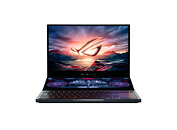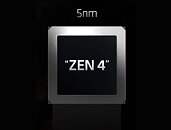
AMD Ryzen Threadripper Pro 5000WX-Series Spec Leak
AMD's Threadripper Pro WX or workstation processors are set to finally join the 5000-series of AMD CPU's if the latest leaks are to be believed. It would seem that AMD is planning no less than five new SKUs, or one more than the current 3000-series of workstation chips. The new entry is a 24 core, 48 thread chip, which was lacking from the current range. As such, the entire series will consist of 12, 16, 24, 32 and 64 core options, all with twice as many threads. All chips have a common 4.5 GHz peak turbo clock, but the base clocks vary by quite a bit, depending on the core count.
The 12 core 5945WX has a base clock of 4.1 GHz, with the 16 core 5955WX coming in at 4 GHz, the 24 core 5965WX then drops to 3.8 GHz, followed by the 32 core 5975WX at 3.6 GHz. Finally the 64 core 5995WX is said to only muster a base clock of 2.7 GHz. All five CPUs have a TDP rating of 280 Watts. The new Threadripper chips are expected to work in current boards that sport a WRX80 socket. As such, PCIe lanes and memory support is expected to remain the same as for the 3000-series.
The 12 core 5945WX has a base clock of 4.1 GHz, with the 16 core 5955WX coming in at 4 GHz, the 24 core 5965WX then drops to 3.8 GHz, followed by the 32 core 5975WX at 3.6 GHz. Finally the 64 core 5995WX is said to only muster a base clock of 2.7 GHz. All five CPUs have a TDP rating of 280 Watts. The new Threadripper chips are expected to work in current boards that sport a WRX80 socket. As such, PCIe lanes and memory support is expected to remain the same as for the 3000-series.


















































